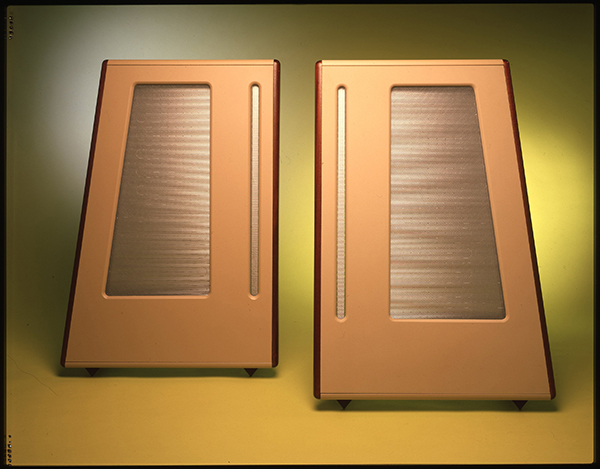Major to Minor Page 3

Divine by Design
I’m not touting the Centaurs as having sensitivity in the Lowther/Klipsch region. A wonderful little tube/MOSFET hybrid (£1200 or so) had to work hard with the Minors, but – within reason – they sounded divine. The Series 5 struggled with the Majors, but handled the Minors with embarrassing ease. As for the rest of the amplifiers: no sweat. And while I would expect 200W/channel’s worth of D’Agostino Delights to do marvellous things to the lower registers, the dynamics, headroom and the attack, I refuse to lose sight of the cost element.
So how do the Centaur speakers differ from the full-range specimens? In a word: punch. Played side by side with Divas or Stages, the Centaurs show you the difference between planar woofers and acoustic suspension cone woofers. The former are smooth, visceral, tangible. Despite the weight and extension, ribbon-derived bass is understated, almost incidental. Graft a cone onto a ribbon and you add greater slam, attack, presence.
The kick, especially from percussion and electric bass, will disarm any who have criticised full-range Apogees because they didn’t like or comprehend the nature of ribbon bass. The benefits of a sane impedance, greater sensitivity and easier room matching are mere bonuses. In the sound stakes, it’s a happy marriage for those who can’t make the leap from dynamic woofer sound to planar bass.

Apogee’s ‘full-range’ Stage measured 950mm tall by 660mm at its widest point, the chassis itself being some 50mm thick. It cost £2350 per pair when launched in the UK in 1990
Sittin’ Pretty
In a way, this undermines one consistent Apogee trait, that of refinement. It’s like replacing the tyres on your Mercedes for low-profile road huggers. Sure, the grip improves, but you can definitely kiss the ride goodbye. The real magic, though, is in the blending. My favourite hybrids – the Celestion 1000s, MartinLogans and so on – work well because the designers knew how to segue two different technologies. Apogee took ten years from its inception before it felt that a ribbon/cone hybrid met its standards and the wait was worth it.
The trick, as Celestion found when crossing over at higher-than-expected frequencies, was to find a woofer as controlled, well-damped and fast as the ribbon element. Try though I did, I couldn’t find anything which betrayed this miscegenation. Tough acoustic tracks, lots of solo recordings, all-brass ensembles – the sound was ‘of a piece’. Using my current fave track, the peerless Ruth Brown performance of ‘If I Can’t Sell It, I’ll Keep Sittin’ On It’, I tried to listen through the music for Minor or Major flaws (and to think I resisted the puns almost to the end ), but both models said, ‘No way, Jack, you’re gonna listen to the music’. Which I most certainly did.
These speakers are like old friends. They have the familiar Apogee sweetness (here’s where the transistors lose out to the tubes), palpable three-dimensionality, air, a sense of real space, image precision and midband warmth. Ruth Brown was in the room, swinging to beat the band.
The Major is serious stuff, a true, high-end Apogee speaker but with bass you’d expect of an ATC monitor or other dynamic masterpiece. It will do justice to amps that come in crates. It paints a picture from wall to wall and floor to ceiling. But the Minor is even more satisfying as it costs less than a third of the price and will work in tiny rooms. What you give up is barely significant when you factor in budget and space. And that makes it even more of an achievement.


















































